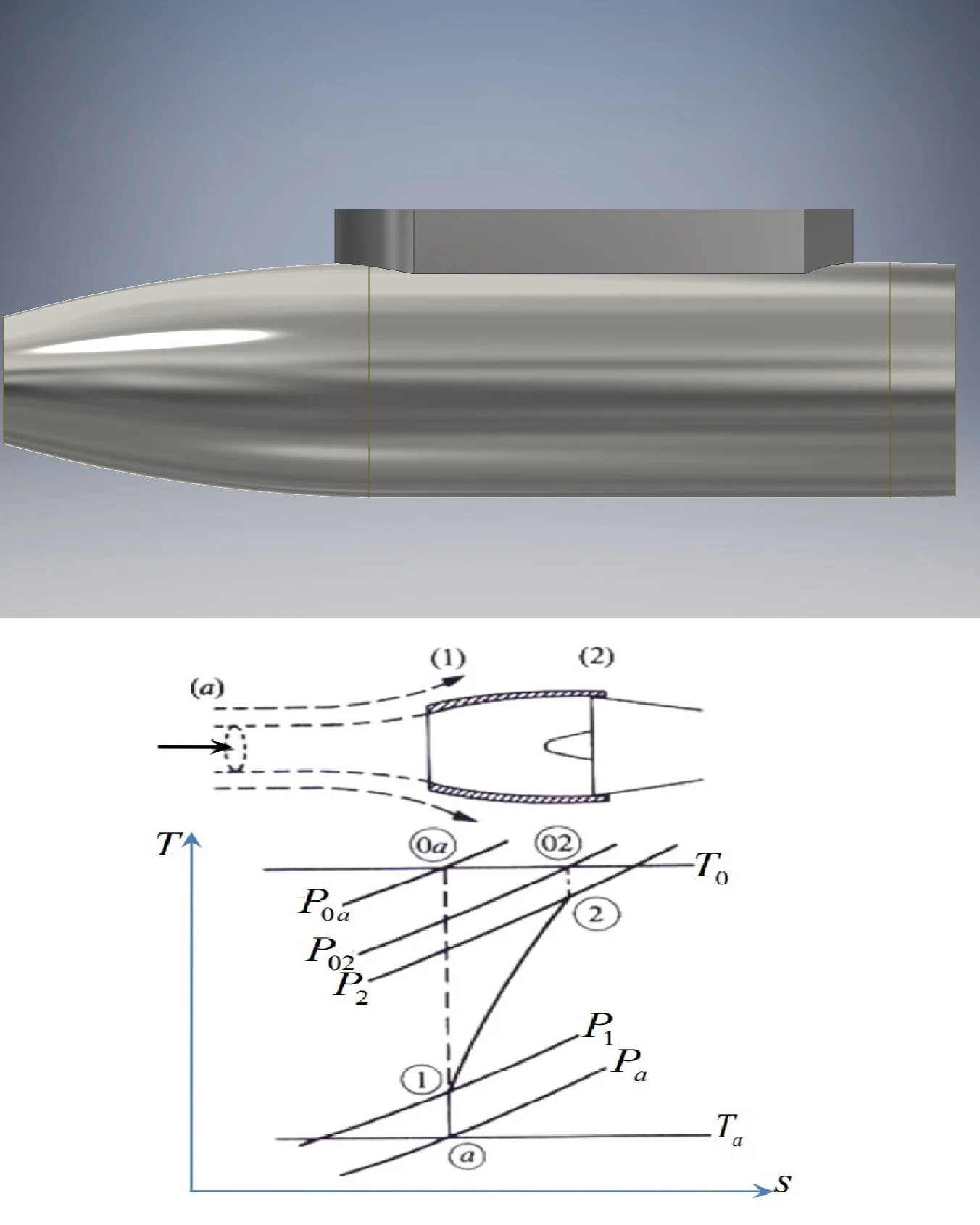Subsonic Ramjet
The subsonic ramjet is optimized for a Mach Number around 0.8, the reason is that compression process includes both external compression (Von Ohain/Whittle) and internal compression, the external compression is almost an adiabatic process, the air inlet area is captured upstream and air is slow down to engine inlet area, hence pressure is recovered, you can see this on the T-s points a-1.
The internal compression process is air moving against an increased pressure gradient of a divergent passage, this air flow will incur in losses and therefore is not a straight line but a line from points 1 to 2, an irreversible process.
Low Supersonic Ramjet
As stated in the objectives for the Subsonic Ramjet Concept we wanted to understand combustion process, fuel injection, flameholding, required combustor length. We decided to design and build a Low Supersonic Ramjet, and the reason was to explore supersonic inlet design and internal component validation will be same as Subsonic Ramjet.
At this point we will start soon testing using Propane gas fuel, then after testing progress we will design a liquid fuel injector ring and the means for achieving optimal fuel atomization.
Mounting Strut
Our test will mount Ramjet strut support to a linear cart in order to demonstrate one basic principle of Ramjets, which is its ability to produce thrust.
Flameholding
In spite of the many developments done during 50’s and 60’s , we need to find or use already proven ideas so we can keep costs down. Our original design called for V gutters ring for flame holding, our Low Supersonic Ramjet is just 90mm diameter, making V gutters out of stainless metal sheet in such small diameter proved to be extremely difficult, unless you build some dies and stamped, also you can machine, but these solutions will increase cost at this stage, we decided to do a combination of gutter rings plus perforated baffle (Contribution of Talos Ramjet).




